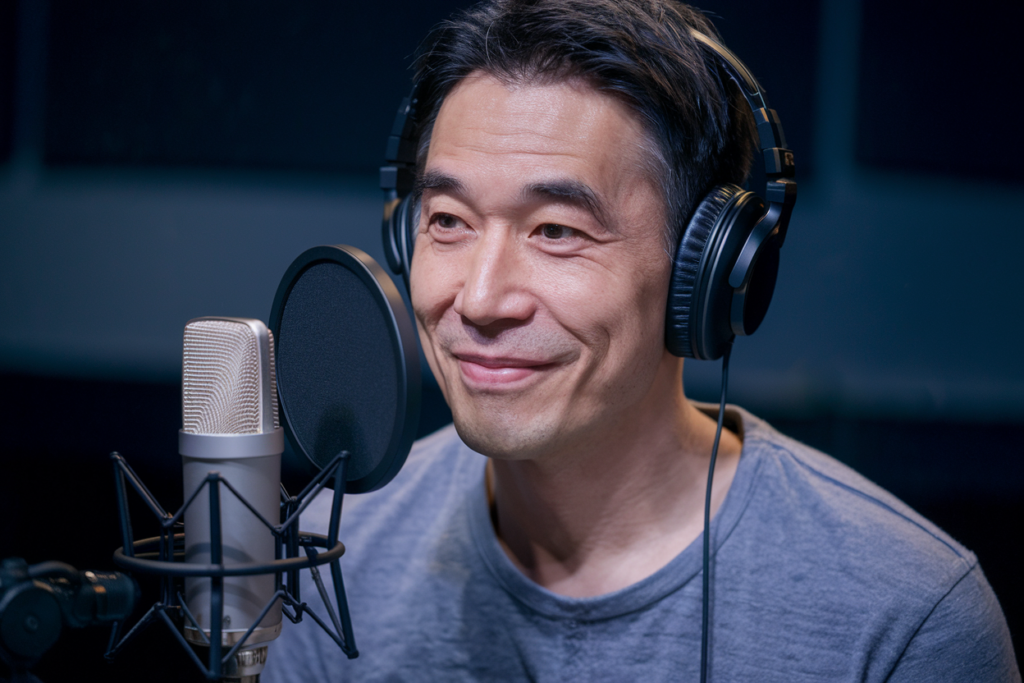Key Takeaways
- Accent Selection is Crucial: Choosing the right Japanese accent significantly impacts localization effectiveness and audience connection.
- Diverse Accents Represent Unique Identities: Each accent, such as Tokyo, Kansai, Hokkaido, Okinawa, and Tohoku, carries distinct characteristics that resonate differently with audiences.
- Regional Nuances Enhance Authenticity: Incorporating regional accents boosts credibility and creates a genuine experience for listeners, fostering trust in your brand.
- Audience Engagement Matters: The appropriate accent can evoke emotions and strengthen cultural ties, leading to higher engagement rates among targeted demographics.
- Align Content Type with Accent Choice: Different content formats require specific accents; professional materials may benefit from the clarity of the Tokyo accent while creative projects might thrive with the vibrancy of Kansai.
Ever wondered which Japanese accent works best for localization? Choosing the right one can make or break your project. With Japan’s rich tapestry of dialects, picking an accent that resonates with your target audience is crucial for effective communication and cultural connection.
Whether you’re localizing a video game, an app, or marketing materials, understanding regional nuances isn’t just helpful; it’s essential. From the distinct sounds of Tokyo to the unique flair of Kansai, each accent carries its own charm and authenticity. So how do you decide which one aligns with your brand voice? Dive in as we explore the best Japanese accents for localization and help you connect more deeply with your audience.
Understanding Japanese Accents
Selecting the right Japanese accent for your localization efforts is crucial. Each accent carries unique characteristics that resonate differently with audiences.
Types of Japanese Accents
Japanese accents can be categorized into several main types, each reflecting distinct regional identities.
- Tokyo Accent: Recognized as standard Japanese, this accent is widely used in media and education. Voice actors often adopt this style for its clarity and neutrality.
- Kansai Accent: Known for its lively intonation and expressiveness, the Kansai accent adds charm to voiceovers. It’s commonly heard in Osaka and Kyoto, making it popular among those seeking a more relatable sound.
- Hokkaido Accent: This accent has subtle influences from both northern dialects and standard Japanese. It offers a fresh tone suited for specific regional projects.
- Okinawa Accent: Unique due to its influences from indigenous languages, the Okinawa accent brings warmth and cultural depth to voice work.
- Tohoku Accent: This accent carries a softer tone with elongated vowel sounds, creating an endearing quality in voiceovers targeting local audiences.
Regional Variations in Accents
Understanding regional variations enhances your ability to connect authentically with your audience.
- Cultural Context: Different regions carry their own traditions and expressions, which reflect in speech patterns.
- Audience Engagement: Using an appropriate accent aligns your message with cultural nuances, making it more relatable.
- Target Demographics: Tailoring accents based on demographics ensures that your content resonates deeply with viewers or listeners.
By considering these factors when choosing a voice artist or actor for your project, you create a more engaging experience that speaks directly to the heart of diverse audiences throughout Japan.
Importance of Accent in Localization
Accent selection plays a crucial role in localization projects, especially when connecting with Japanese audiences. Choosing the right accent can enhance communication and strengthen cultural ties, making your message resonate more deeply.
Enhancing Authenticity
Using an authentic accent boosts the credibility of your content. When voiceovers reflect regional nuances, they create a genuine experience for listeners. For instance, opting for the Kansai accent adds warmth and personality to marketing materials, while the Tokyo accent ensures clarity and professionalism. This authenticity not only engages audiences but also fosters trust in your brand.
Impact on Audience Engagement
Accent influences how audiences perceive and engage with your content. A well-chosen voiceover talent can evoke specific emotions or reactions based on regional familiarity. For example, using local accents helps establish a connection with listeners who appreciate cultural representation. This connection can lead to higher engagement rates as audiences feel more understood and valued in their unique context.
Incorporating the right Japanese accent into your localization efforts creates an inviting atmosphere that encourages deeper interactions with your brand. By prioritizing these elements, you position yourself for success in reaching diverse demographics across Japan.
Best Japanese Accents for Localization
Selecting the right Japanese accent for localization significantly enhances your project’s effectiveness. Each accent carries unique characteristics that resonate differently with audiences, making this choice crucial.
Tokyo Accent
The Tokyo accent stands as the standard in Japan, often recognized for its clarity and neutrality. This makes it a popular choice for voiceovers in media and educational materials. If you aim to reach a broad audience across Japan, the Tokyo accent proves effective since it’s familiar to most listeners. Its straightforward pronunciation helps ensure that your message comes through clearly without regional distractions.
Kansai Accent
The Kansai accent adds vibrancy and warmth to any project. Known for its lively intonation, it captures attention and creates an inviting atmosphere. When used in voiceovers, this accent can evoke strong emotions and foster a sense of connection with viewers or listeners from the region. The playful nature of the Kansai dialect allows your content to stand out while building rapport with an audience that appreciates familiarity and charm.
Hokkaido Accent
The Hokkaido accent offers a unique tone influenced by northern dialects, providing freshness that appeals to certain demographics. Voiceovers featuring this accent bring an endearing quality that’s particularly engaging for storytelling projects. If you’re targeting specific cultural elements or aiming for authenticity in narratives tied to northern Japan, opting for Hokkaido can enhance relatability among local audiences.
Understanding these distinct accents ensures you select one that aligns perfectly with your brand’s voice and target demographic. By choosing wisely, you create compelling connections through localized content that resonates deeply within Japan’s diverse landscape.
Selecting the Right Accent for Your Project
Choosing the right accent for your localization project plays a crucial role in how effectively you connect with your audience. Different accents can evoke specific emotions and align closely with regional identities, enhancing both engagement and authenticity.
Audience Considerations
When selecting an accent, think about your target demographic. Are you aiming to reach a younger crowd or perhaps a more traditional audience? For example, if you’re addressing a youthful market in urban areas like Tokyo, the standard Tokyo accent brings clarity and relatability. On the other hand, if you’re targeting audiences in Kansai, using the lively Kansai accent could create that emotional bond you’re after. Understanding who your listeners are helps tailor your voiceover choices to resonate deeply.
Content Type Relevance
The type of content matters just as much as the audience. A professional video or corporate presentation might benefit from the clear and neutral tone of the Tokyo accent to ensure messages come across effectively. Conversely, for an animated series or marketing campaign aimed at evoking excitement, a vibrant Kansai voiceover could add personality and charm that captivates viewers. Each content format has its nuances; matching these with appropriate accents enhances overall impact while ensuring your message is delivered authentically.
By carefully considering both audience characteristics and content types, you can select an accent that not only reinforces brand identity but also fosters genuine connections with listeners throughout Japan’s rich cultural landscape.
Conclusion
Choosing the right Japanese accent for localization is a game-changer in connecting with your audience. By considering regional nuances you can enhance communication and cultural resonance. Whether you’re aiming for the clarity of the Tokyo accent or the warmth of Kansai, each choice carries its own weight.
Taking into account your target demographic and content type ensures that your message hits home. An authentic accent not only elevates credibility but also fosters genuine connections. As you navigate Japan’s diverse linguistic landscape remember that every detail matters in creating an engaging experience for your audience.
Frequently Asked Questions
What is the importance of selecting the right Japanese accent for localization?
Choosing the right Japanese accent is crucial for effective communication and cultural connection with your target audience. It enhances engagement, authenticity, and strengthens brand identity within Japan’s diverse regional landscape.
What are the main types of Japanese accents discussed in the article?
The article discusses several key Japanese accents: Tokyo (standard), Kansai (lively intonation), Hokkaido (fresh tone), Okinawa (cultural warmth), and Tohoku (soft tone). Each has unique characteristics that reflect distinct regional identities.
How does the Tokyo accent benefit localization projects?
The Tokyo accent is known for its clarity and neutrality, making it ideal for reaching a broad audience. It’s widely used in media and education, ensuring that content is easily understood across various demographics.
Why is the Kansai accent significant in localization?
The Kansai accent adds vibrancy and emotional depth to content, creating stronger connections with audiences from that region. Its lively intonation makes it particularly engaging for storytelling and marketing materials.
How can understanding regional variations improve audience engagement?
Recognizing regional nuances allows brands to tailor their messaging effectively, fostering authentic connections with local audiences. This enhances relatability and improves overall engagement rates by resonating with cultural identities.
What factors should be considered when selecting an accent for localization?
Key factors include target demographics, content type relevance, and desired emotional impact. Understanding whether your audience is younger urban dwellers or more traditional individuals will guide you toward an appropriate accent choice.
Can using an authentic accent enhance credibility?
Yes! Using an authentic Japanese accent boosts content credibility as it demonstrates respect for cultural nuances. This can lead to increased trust among audiences who value genuine representation in communications.







